Papers by Barry Richardson
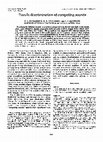
Attention Perception & Psychophysics, Nov 1, 1978
Discriminably different sounds, concurrently presented from the left and right of the medial plan... more Discriminably different sounds, concurrently presented from the left and right of the medial plane, were reduced in angular separation until subjects could no longer detect which sound was "left" and which was "right." The procedure was repeated with hearing masked and judgments made on the basis of the tactile signals at two fingertip vibrators that received their inputs from two miniature microphones bilaterally located on the subject's head. Auditory and tactile performance were compared under active (head movements permitted) and passive (head held still) conditions. Active and passive performance were not significantly different. Auditory and tactile performance became no better than chance at angular separations of 2.7°and 4.4°, respectively. Touch compared sufficiently well with audition to support arguments for the inclusion of sound localization information in devices which use the skin as a substitute for the ear.
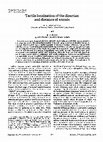
Attention Perception & Psychophysics, Jul 1, 1979
In a previous paper, experiments were reported which demonstrated that human subjects can judge a... more In a previous paper, experiments were reported which demonstrated that human subjects can judge accurately the azimuthal direction of sounds using a tactile localization device. It was also demonstrated that a tactile analogue of selective auditory attention was possible with this system. Three additional experiments, reported here, indicate that subjects are also able to judge the distance of the sound source and can concurrently judge both the azimuthal direction and distance of a source. Comparisons were made between conditions where head movements were permitted (active) and conditions where the head was held still (passive), and between normal auditory judgments and tactile judgments. Active tactile performance was essentially similar to auditory performance. Active performance was superior to passive in both directional and distance judgment, but different components of the motor-sensory complex were found to contribute to active superiority in the two tasks. The implication of these experiments for the design of auditory prosthetic devices is discussed.
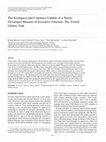
Journal of the International Neuropsychological Society, 2012
Virtual reality (VR) assessment paradigms have the potential to address the limited ecological va... more Virtual reality (VR) assessment paradigms have the potential to address the limited ecological validity of pen and paper measures of executive function (EF) and the pragmatic and reliability issues associated with functional measures. To investigate the ecological validity and construct validity of a newly developed VR measure of EF, the Virtual Library Task (VLT); a real life analogous task-the Real Library Task (RLT); and five neuropsychological measures of EF were administered to 30 patients with traumatic brain injury (TBI) and 30 healthy Controls. Significant others for each participant also completed the Dysexecutive Questionnaire (DEX), which is a behavioral rating scale of everyday EF. Performances on the VLT and the RLT were significantly positively correlated indicating that VR performance is similar to real world performance. The TBI group performed significantly worse than the Control group on the VLT and the Modified Six Elements Test (MSET) but the other four neuropsychological measures of EF failed to differentiate the groups. Both the MSET and the VLT significantly predicted everyday EF suggesting that they are both ecologically valid tools for the assessment of EF. The VLT has the advantage over the MSET of providing objective measurement of individual components of EF.

The Journal of the Acoustical Society of America, 1976
Most attempts to design artificial ears have concentrated on displaying frequency information to ... more Most attempts to design artificial ears have concentrated on displaying frequency information to the skin of deaf subjects in the hope that they may recognize complex patterns of sounds and thus have some ’’auditory function’’ restored. The problem from a practical standpoint is that simultaneously occurring sounds that originate from different sources are difficult if not impossible to unscramble. In normal audition, auditory localization not only enables subjects to perceive the locus of origin of sounds with a high degree of accuracy, but also appears to be the most important determinant of selective auditory attention. The three experiments reported in this paper demonstrate first of all that tactile sound localization is possible with an accuracy that approaches normal audition, and secondly that subjects can track moving sound sources. Finally, an analog of selective auditory attention was found by using tactile localization. These experiments show the utility of incorporating...
The College Mathematics Journal, 1987
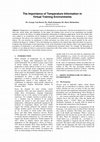
Temperature is an important source of information in our interactions with the environment but it... more Temperature is an important source of information in our interactions with the environment but it is rarely built into virtual reality and simulation. In this paper, the findings from several of our experiments are brought together to discuss the efficacy of adding temperature information in simulation applications. In the first, Peltier tiles were added to an exoskeleton device designed to provide kinaesthetic feedback when interacting in a virtual environment. The effects were explored in terms of the potential to increase presence when interacting with virtual objects. We also describe an experiment in which movement was either active or passive-guided. In the active condition the degree of "coldness" felt at the fingertip was reported as less intense than when movement was passive. It appears that intentionality of movement plays a role in the attenuation of the stimulus. Other work suggests that the perception of temperature is not influenced by a simultaneously presented colour. For example, the perception of coldness is not enhanced when it is processed in conjunction with a blue colour. It is proposed that thermal feedback may be a useful adjunct for virtual reality interface devices.

Journal of Psychology, 1977
This paper is concerned with attempts at sensory substitution and in particular with devices that... more This paper is concerned with attempts at sensory substitution and in particular with devices that have been designed to substitute for hearing by using the skin as an alternative channel of communication. A review of the literature suggests that the failure or limitations of tactile substitution systems are due, not to the inadequacy of the skin's perceptual processing capacity, but to inappropriate displays, ineffective training methods, or insensitive testing techniques. Specifically, displays have been artificial in that they have typically failed to preserve the information relevant to the modality for which they are supposed to substitute. Furthermore, certain false assumptions and misconceptions have been manifest in testing techniques which have not taken into account the way in which perceptual processes normally develop and operate. The result has been that some important evidence has been ignored or has gone unnoticed and that some promising devices have been prematurely abandoned. In the final section of the review, some suggestions are made concerning the design, application, and evaluation of an artificial ear.

South Pacific Journal of Psychology, 1984
Thirty photographs depicting diverse emotional expressions were shown to a sample of Melanesian s... more Thirty photographs depicting diverse emotional expressions were shown to a sample of Melanesian students who were assigned to either a face plus context or face alone condition. Significant differences between the two groups were obtained in a substantial proportion of cases on Schlosberg's Pleasant Unpleasant, and Attention – Rejection scales and the emotional expressions were judged to be appropriate to the context. These findings support the suggestion that the presence or absence of context is an important variable in the judgement of emotional expression and lend credence to the universal process theory.Research on perception of emotions has consistently illustrated that observers can accurately judge emotions in facial expressions (Ekman, Friesen, & Ellsworth, 1972; Izard, 1971) and that the face conveys important information about emotions being experienced (Ekman & Oster, 1979). In recent years, however, a question of interest has been the relative contributions of facia...
Poster presented at …, 2005
Page 1. Looking through a fingertip Barry L. Richardson, Mark A. Symmons, Dianne B. Wuillemin &am... more Page 1. Looking through a fingertip Barry L. Richardson, Mark A. Symmons, Dianne B. Wuillemin & George H. Van Doorn Bionics and Cognitive Science Centre, Schoolof Humanities Communications and Social Sciences, Monash university, Churchill, Australia 3842. ...
WaterMod 2: Soil water dynamics in agricultural and environmental systems........................... more WaterMod 2: Soil water dynamics in agricultural and environmental systems......................................................... 21
Psychology Moving East, 2019
British Journal of Audiology, 1986


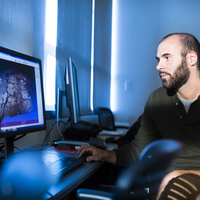

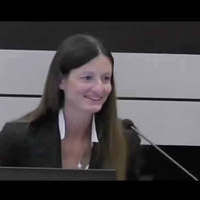






Uploads
Papers by Barry Richardson